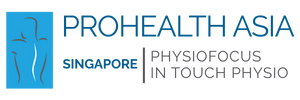Choosing Your Care: Physiotherapy, Manual Therapy, and Sports Therapy Explained
The landscape of physical rehabilitation can be confusing, especially when terms like physiotherapy, manual therapy, and sports therapy are used. While all three are dedicated to improving movement and reducing pain, they represent different levels of specialization, scope of practice, and core philosophies.
Here is a breakdown of their distinct roles and how they intersect.
1. Physiotherapy (Physical Therapy)
Physiotherapy is the foundational and most encompassing discipline of the three. It is a regulated, primary healthcare profession that focuses on restoring, maintaining, and maximizing a patient's physical strength, function, movement, and overall well-being.
Core Identity and Scope
Broadest Scope: Physiotherapists address a vast range of conditions across the lifespan, not just injuries.
Medical Focus: They work with musculoskeletal issues (e.g., back pain, broken bones), as well as complex systemic conditions like neurological disorders (stroke, Multiple Sclerosis), cardiorespiratory diseases (COPD, post-heart surgery), and developmental issues in children.
Treatment Philosophy: Treatment is typically a holistic combination of patient education, therapeutic exercise prescription (the most critical component), and various hands-on or machine-assisted techniques.
When to Choose a Physiotherapist
A physiotherapist is the ideal choice for anyone needing a broad, evidence-based approach, especially for chronic pain, complex mobility issues, or recovery from serious illness or surgery.
2. Manual Therapy (A Specialised Skill)
Manual therapy is unique because it is not a profession but rather a toolset or a highly specialised treatment approach employed by qualified practitioners, including physiotherapists, osteopaths, and chiropractors.
Core Identity and Scope
Hands-On Focus: It refers exclusively to the "hands-on" techniques used to diagnose and treat soft tissues, nerves, and joint structures.
Treatment Philosophy: The goal is to modulate pain, increase range of motion, and reduce muscle tension through direct physical contact.
Integration: It is almost always used as an adjunct to other treatments. For example, a physiotherapist might use manual therapy (like joint mobilisation) to prepare a joint, then follow it up with targeted strengthening exercises.
Key Techniques
Joint Mobilisation: Rhythmic, passive movements applied to restricted joints.
Spinal Manipulation: High-velocity thrusts applied to a joint (often resulting in a "pop").
Soft Tissue Techniques: Deep tissue massage, trigger point therapy, and myofascial release.
3. Sports Therapy
Sports therapy is a highly focused and relatively newer profession that specifically bridges the gap between clinical injury management and high-level physical activity.
Core Identity and Scope
Target Population: Its focus is nearly exclusive to the athletic and physically active population.
Injury Pathway: Sports therapists specialize in the entire journey of a sport-related injury: prevention, immediate care, assessment, treatment, and functional rehabilitation back to pre-injury levels of sport.
Treatment Philosophy: The rehabilitation is highly functional and sport-specific, focusing on agility, power, endurance, and performance metrics, not just basic day-to-day mobility.
When to Choose a Sports Therapist
If you have a specific injury sustained during exercise (e.g., ankle sprain on the football pitch, runner's knee) and your primary goal is a rapid, safe, and performance-optimised return to that activity, a Sports Therapist is often the best fit.
Summary: The Overlap and the Difference
The easiest way to understand the relationship is through a hierarchy:
Physiotherapy is the large umbrella covering rehabilitation for all body systems and people.
A qualified Physiotherapist will use Manual Therapy as one of many tools in their clinical treatment toolbox.
Sports Therapy is a focused discipline that applies rehabilitation principles specifically to the demands of sports performance and injury.

